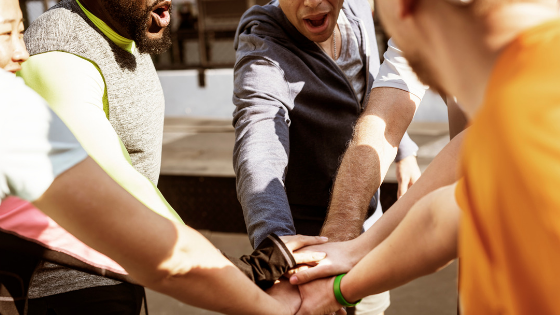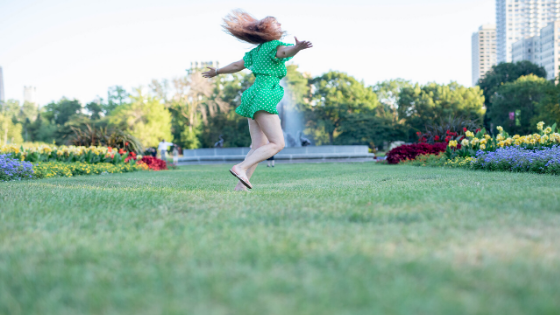4 Meditation Techniques For People Who Think They Can’t
Confession: I’m a yoga teacher and my meditation game is NOT exactly on point.
There. I said it. I know I’m supposed to be all enlightened and present and $hit. But the truth is, I still find meditation really difficult at times. I can barely sit still for long enough to watch a 3 minute clip of a show that my husband thinks is funny. The thought of sitting cross legged on a meditation pillow for 30 minutes, alone with my thoughts sounds next to impossible for me on most days.
So many of the successful people I know and respect attribute their success to mediation. It’s trendy right now. From celebrities to personal development gurus, everybody seems to be boasting the benefits of meditating. They talk about their beautiful morning routine that consists of rising at the crack of dawn, slowly drinking a cup of tea, doing sun salutations and some stream of consciousness journaling. Then slipping into 30 minutes of blissful meditation before starting their super productive day.
REALLY?
Is that really a thing? Because my morning looks more like me pressing the snooze button a dozen times, taking my dog for a quick walk, and grabbing my coffee on the way out my door. Bonus points if I have time to make the bed and/or was on top of my game enough to prep some overnight oats. There is no time to sit for 30 minutes and “just be”. Because all I can think about is what traffic is gonna be like and all the things on my to-do list.
And yet…
I know that meditation is beneficial for me. When I actually take some time to do it, I feel calmer. Less anxious. More grateful. More self-aware. I know many of my students and clients are a lot like me. They tell me they don’t have time. That they don’t know how. That they can’t sit and do nothing, and that it’s not for them. But something in them makes them curious. Makes them want to try this thing that everyone says is so great. Maybe you do too? But how do you make a habit of this thing that seems so daunting?

Start where you are.
Meditation doesn’t have to be all or nothing. If you don’t think you have it in you to just sit and do nothing for X amount of time, here are a few ideas for how to get started.
1.Tune into your senses
Many times, when we’re in our own heads, it’s either because we’re ruminating about the past, or worrying about the future. To get yourself back into the present, tune into each of your senses. You can do this wherever you are. Notice what you’re feeling. The temperature of the air. The feel of your clothing against your skin. The ground underneath your feet. Listen carefully. What can you hear? Crickets? Traffic? Creaking floorboards? Take a breath in through your nose and notice if you smell anything. Look around you and notice: the view outside, the texture of the couch. Close your eyes. Notice if you see any colors behind your eyelids. Is it light? Dark? Changing? Lick your lips. Swallow. Can you taste anything? Cycle through your senses a few times. Do you feel calmer already? Good!
2. Moving meditation
Yoga is often described as being a moving “meditation”. Not into yoga? A run, bike ride, hike, or walk can often be meditative too. As you move, take some time to be aware of your surroundings. You can also check back in with your senses while moving. Notice your steps, your breath, your surroundings. You might even notice things about the place you are that you don’t usually pick up on. You might feel better listening to some music or doing this in total silence. Once you get yourself into a groove, you’ll likely have an easier time getting out of your head and into your body. I personally like to do this with a bike ride because I have to focus a little harder on what I’m doing to make sure I don’t fall over or run into a pole. 😉
3. Focus on your breathing
There are many different breathing exercises (called pranayama) that can help calm the mind. I find that many of these ancient techniques are best experienced when taught by a qualified practitioner. Words on paper really don’t do them justice. But I’ll share a super simple favorite of mine: exhale for longer than you inhale. This will help you tap into your parasympathetic nervous system and get out of that “fight or flight” state that so many of us live in. Breathe in for a count of 3. Exhale for a count of 5. Repeat for 10 rounds and notice how much calmer you feel. Want to take it a step further? Lay down and notice where your breathe is going. Is it more in the belly or the chest? Is it expanding equally on both sides of you? In the front and the back? Without judging, just notice. (Actually got this one from my other life as a dancer from Lisa Howell of The Ballet Blog!)
4. Give your Mind something to do
I find that when I try to meditate, I have a hard time clearing my mind. I joke that I like to give the little monkeys in my brain something to do. That often that includes the repetition of a particular phrase or a few words to help guide my mind to the way I want to feel. In yoga, mala beads are often used as tool for this type of meditation. They are a string of 108 beads that have been used for thousands of years for prayer in Hinduism and Buddhism. Before you pick up your own mala and start repeating a mantra, it’s important to be aware of cultural appropriation and how it can be harmful. I love this quote from this article from Everyday Feminism which states:
“Anyone who uses a cultural item they’re not familiar with should do their research to understand where it comes from, what it means, the protocols of engaging with and utilizing it, and how it should be cared for.”
In other words, do some research on mala before you decide to use them in a meditation. When in doubt, you can use something else in a tactile way to help you stay present and keep count of where you are. Repeat a simple affirmation such as: I am calm, peaceful, and relaxed. You can choose whatever words resonate in the moment. Or use each breath to draw to mind something you are grateful for.
If you thought meditation wasn’t for you, I hope that these 4 tips have given you some ideas for how to start.
It doesn’t need to last for an extensive period of time to count. You can set a timer for however much time you have to give. Or maybe even find a relaxing song to play in the background to help you tune out distractions. I really like this one and so do a lot of my yoga students. Give it a try and then comment below and let me know which one was your favorite!








Great dive into meditation and making it accessible! Pranayama and mantra definitely “tie the puppy to the post” for our minds. I use the headspace app sometimes!
Very much appreciate your writing on cultural appropriation and doing your research! Malas are not just a yoga fashion statement.
Thanks Tricia! I’m trying to know better do better when it comes to things like cultural appropriation. Thanks for noticing! 🙂
It was so interesting that directly after I read your post, I read another post about cultural appropriation. I know that was not the “meat and potatoes” of your piece but the awareness yours brought to the table reminded me to open my eyes to what’s around me, question, and research.
Also had a fabulous first experience with SUP yoga on a lake and the moving meditation concept came in to play!
Love your insights! ❤️
So glad to hear that! SUP is awesome and requires a whole new type of mindfulness. Glad my post got some wheels turning for you!